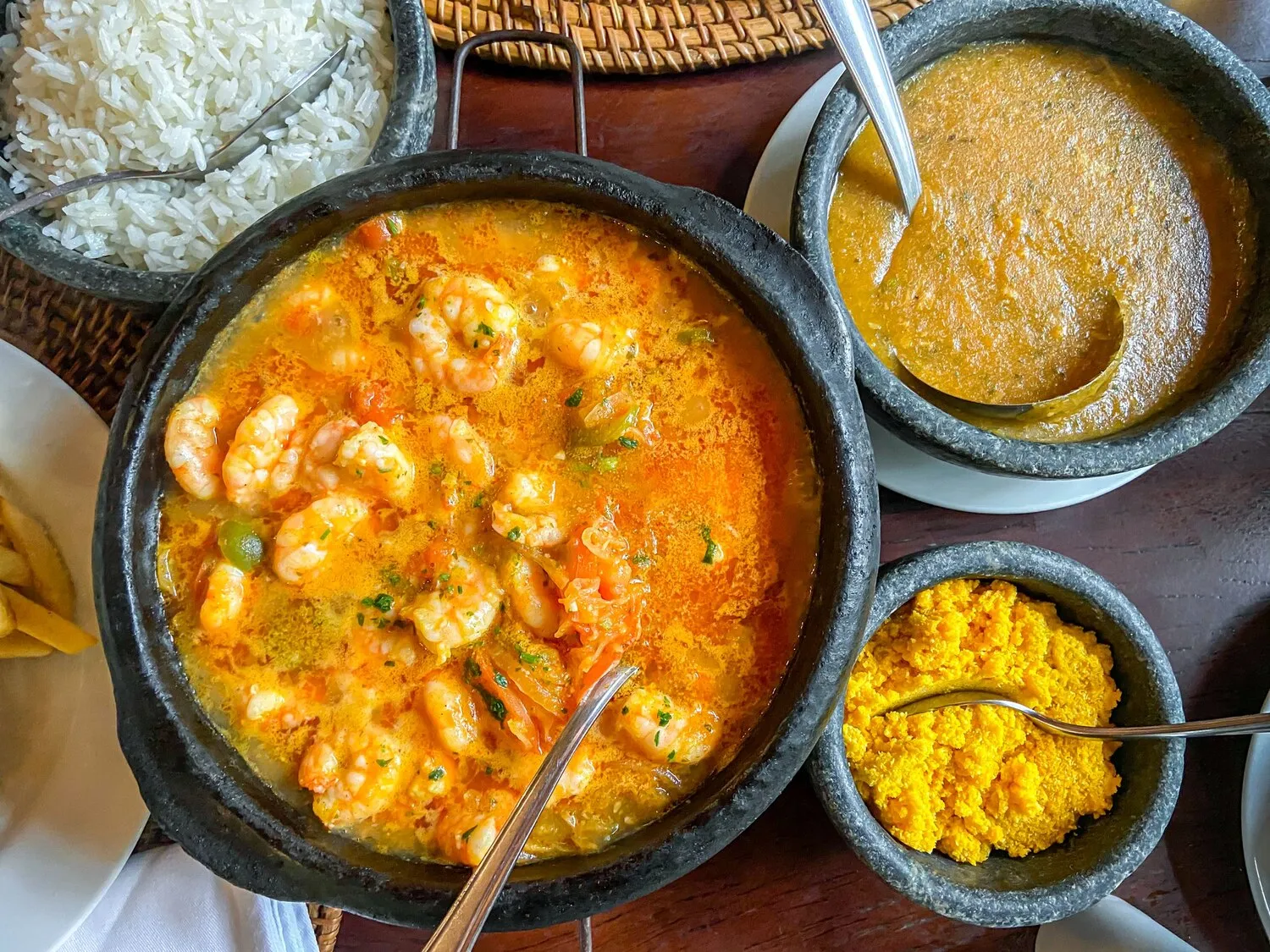
Moqueca
A typical Brazilian seafood stew, likely the restaurant's namesake and specialty. Probably includes fish, shrimp, coconut milk, and dendê oil.
Nutrition Facts
* The % Daily Value (DV) tells you how much a nutrient in a serving of food contributes to a daily diet. 2,000 calories a day is used for general nutrition advice.
A Mukeka
Moqueca's origins are intertwined with the history of Brazil, reflecting the fusion of Indigenous, African, and Portuguese culinary traditions. Indigenous Brazilians were preparing fish stews long before the arrival of Europeans. African influence, particularly the use of dendê oil and coconut milk, significantly shaped the dish. The Portuguese contributed techniques and ingredients, further evolving Moqueca into the beloved dish it is today.
Moqueca is more than just a dish in Brazil; it's a symbol of regional identity, family gatherings, and culinary heritage. It represents the diversity of Brazilian culture and the harmonious blend of different influences.
Regional Variations
There are two main types of Moqueca: Moqueca Capixaba from Espírito Santo and Moqueca Baiana from Bahia. Moqueca Capixaba does not use dendê oil or coconut milk, emphasizing the freshness of the seafood and vegetables. Moqueca Baiana, on the other hand, is known for its vibrant color and rich flavor due to the generous use of dendê oil and coconut milk. These regional variations reflect the unique ingredients and culinary preferences of each region.
Social Gathering
Moqueca is often prepared and enjoyed during social gatherings and family celebrations. It's a dish that brings people together, fostering a sense of community and shared experience. The preparation of Moqueca can be a collaborative effort, with family members contributing to different stages of the cooking process.
Culinary Symbol
Moqueca represents the rich culinary heritage of Brazil and the country's ability to blend diverse cultural influences into a unique and flavorful cuisine. It's a dish that is proudly served in homes and restaurants across Brazil, showcasing the country's culinary identity to the world.
Moqueca is characterized by its rich, savory, and subtly sweet flavor profile. The combination of fresh seafood, creamy coconut milk, and the unique, slightly earthy flavor of dendê oil creates a complex and satisfying taste experience.
The core flavor comes from the fresh seafood, typically a combination of fish and shrimp, simmered in a flavorful broth. Coconut milk adds creaminess and a touch of sweetness, balancing the savory elements. Dendê oil, extracted from the fruit of the African oil palm, imparts a distinctive reddish-orange color and a unique, slightly nutty and earthy flavor that is crucial to the authentic Moqueca experience. Onions, garlic, tomatoes, bell peppers, and cilantro contribute aromatic and savory notes, enhancing the overall complexity of the dish. Lime juice is often added at the end to brighten the flavors.
Fresh Ingredients
Use the freshest possible seafood and vegetables. The quality of the ingredients significantly impacts the flavor of the final dish. Look for firm, bright-eyed fish and plump, vibrant shrimp. Choose ripe tomatoes and peppers for optimal sweetness and flavor.
Dendê Oil Quality
Source high-quality dendê oil. The flavor of dendê oil can vary depending on its processing and origin. Look for oil that has a bright reddish-orange color and a clean, nutty aroma. Avoid oil that smells rancid or overly processed.
Gentle Simmering
Cook the Moqueca over low heat, gently simmering the ingredients. Avoid boiling, as this can toughen the seafood and cause the sauce to separate. A slow, gentle simmer allows the flavors to meld together and creates a more tender and flavorful dish.
Serving Suggestions
Serve Moqueca hot, traditionally in a clay pot (panela de barro) if available, with white rice and pirão (a thick porridge made from fish broth and cassava flour). Moqueca is also delicious served with farofa (toasted cassava flour) or bread for soaking up the flavorful sauce.
Explore additional Stew dishes and restaurants
Explore StewDiscover top dining spots and culinary experiences in Feira de Santana.
Explore Feira de SantanaLearn more about the food culture, restaurant scene, and culinary heritage of Brazil.
Explore Brazil